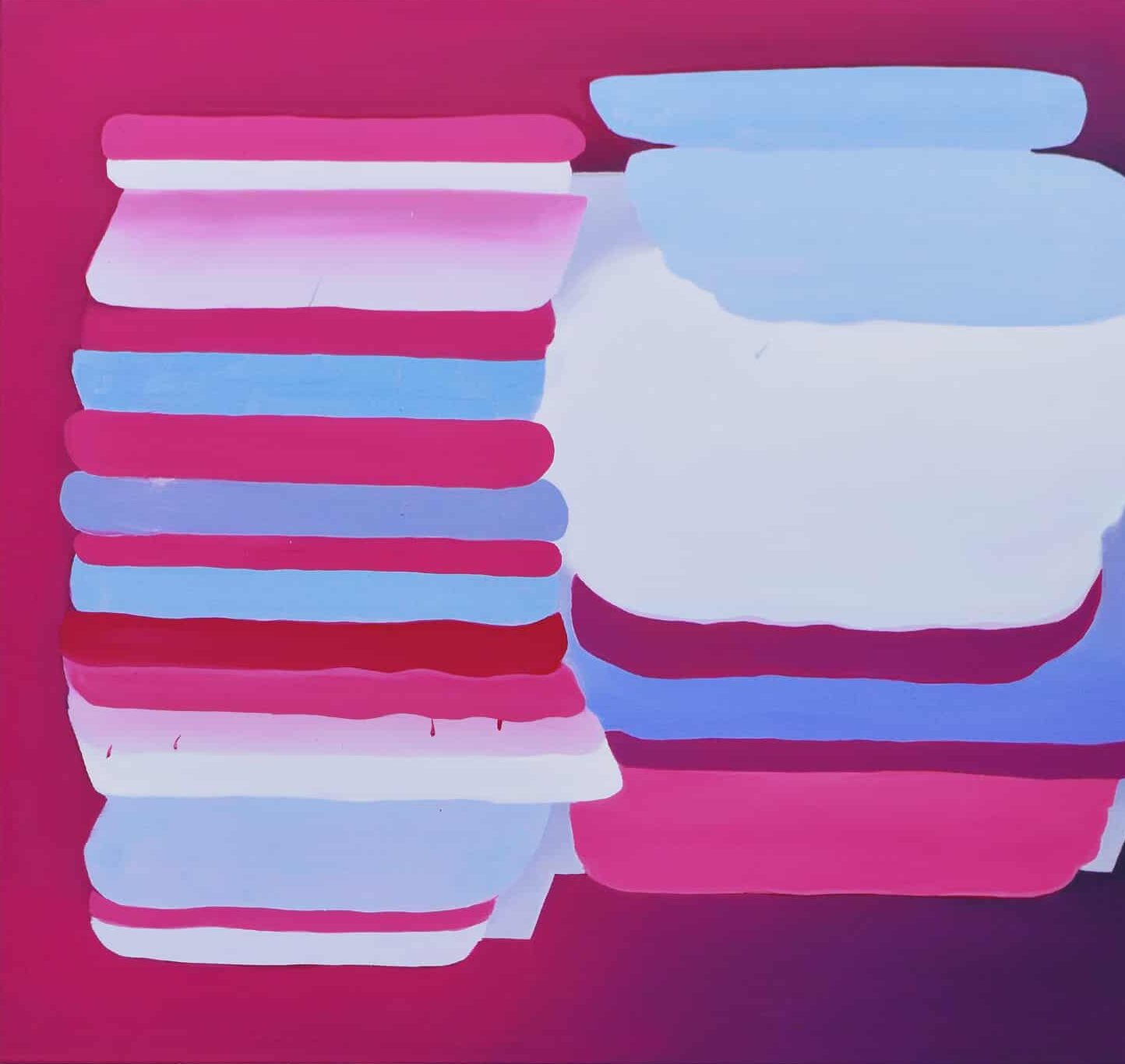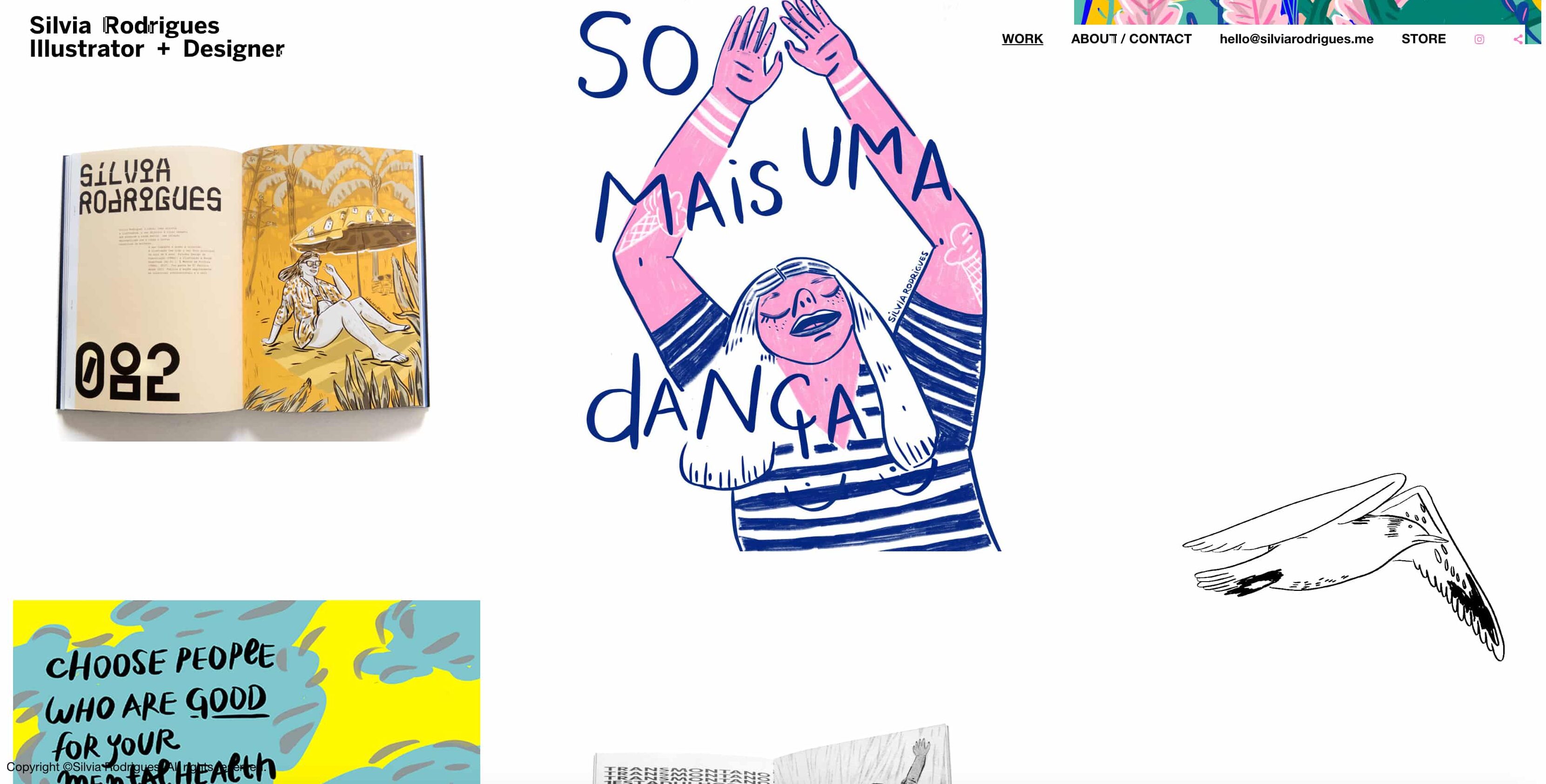A elaboração de uma biografia envolvente e informativa para a página "Sobre mim" do seu portfólio é uma etapa essencial para mostrar suas habilidades e experiências artísticas. Essa seção do seu site permite que você se apresente, destaque seus conhecimentos e, quando apropriado para sua marca e clientela, conecte-se com clientes ou empregadores em potencial em um nível mais pessoal.
Escrever sobre si mesmo pode não ser algo natural para você - e você não está sozinho nisso. Reunimos estas dicas para facilitar o processo e ajudar você a criar uma narrativa convincente que capture sua história e sua jornada profissional exclusivas. Se você gosta mais de vídeos, também pode Assista às nossas dicas condensadas da página Sobre mim aqui.
1. Apresente-se a você
Comece sua biografia apresentando-se, da mesma forma que você faria para iniciar uma conversa com um novo amigo. Compartilhe seu nome, sua área de especialização e uma breve visão geral de quem você é e o que faz. Esse parágrafo inicial deve chamar a atenção do leitor e dar a ele uma noção da personalidade e do histórico de você. A localização pode ser muito importante para alguns clientes e galerias. Não há necessidade de incluir seu endereço completo, mas incluir a cidade onde você está localizado facilita para os clientes em potencial saberem se você atende às necessidades deles.
2. Destaque seus conhecimentos e realizações
Selecione as experiências e realizações das quais você mais se orgulha ou pelas quais está mais empolgado para destacar em sua biografia. Lembre-se de manter sua biografia concisa e focada, em vez de tentar incluir todos os detalhes. Destaque projetos, prêmios ou reconhecimentos notáveis que você tenha recebido e que demonstrem sua experiência e o impacto do seu trabalho. Essas realizações ajudam a criar confiança e credibilidade com o leitor e demonstram o valor que você pode oferecer a clientes ou empregadores em potencial.
Especialmente se você estiver trabalhando comercialmente com marcas ou publicações, ou esperando trabalhar com novas galerias e museus (em vez de trabalhar diretamente com indivíduos individuais), dedicar um tempo para expandir seu histórico profissional e listar as principais habilidades ou áreas de especialização que o tornam excepcionalmente qualificado em sua profissão criativa pode causar um impacto. Mantenha essas informações simples: copie parte do seu currículo que contenha experiência relevante e realizações educacionais e adicione um link para o documento completo atualizado. Seu objetivo nesta seção é demonstrar seus pontos fortes e por que você é a pessoa certa para o trabalho ou projeto.
Adrian Ozimek tem uma ótima abordagem para isso, destacando algumas imagens de seu trabalho apresentadas em publicações notáveis acima de listas de clientes e publicações selecionadas.

3. Compartilhe sua paixão e seus valores
Discuta o que motiva você e os valores que orientam seu trabalho. Explique a paixão que você tem pela sua área e como ela moldou sua carreira. Você não precisa fazer uma declaração muito elaborada! Um ótimo exemplo de uma "declaração de missão" simples, porém abrangente, pode ser encontrado em Página "Sobre" da Nocera & Ferri. Aqui está um pequeno trecho:
"Como dupla criativa, somos especializados em combinar perfeitamente fotografia e cenografia para criar histórias visuais cativantes."
Esse toque pessoal ajudará o leitor a se conectar com você em um nível mais profundo e a entender suas motivações profissionais.

4. Descreva sua abordagem e seu processo
Descreva a abordagem ou o processo exclusivo que você traz para o seu trabalho. Explique como você lida com projetos, colabora com clientes ou resolve problemas.
Novamente, Nocera & Ferri faz isso muito bem:
"Nosso estilo foi moldado ao longo dos anos por nossa formação em design gráfico, aliada a uma abordagem multidisciplinar de nossa pesquisa. Acreditamos que a arte, especialmente a escultura e a arquitetura, tem uma influência constante e forte em nossa abordagem minimalista da fotografia."
Pense em como você vê e interpreta o mundo pessoalmente e tente capturar essa essência em palavras. Essa percepção da sua metodologia ajudará o leitor a entender seu estilo de trabalho e como você pode beneficiá-lo.
Conecte-se com sua comunidade
Eleve o nível de sua marca com um site de portfólio profissional.
5. Procure usar um tom amigável e casual
Ao escrever sua biografia, opte por um tom amigável e de conversa. A menos que seja a maneira como você fala, é melhor evitar uma linguagem excessivamente formal. Em vez disso, escreva como se você estivesse tendo uma conversa casual com o leitor. Isso ajudará você a se conectar com seu público e tornará sua biografia mais envolvente e memorável. Se fizer sentido para você e para o trabalho que cria, acrescentar um pouco de humor também não fará mal algum!
6. Adicione alguns detalhes pessoais
Embora sua biografia deva se concentrar principalmente em suas experiências profissionais, você também pode incluir alguns detalhes pessoais para ajudar o leitor a conhecê-lo melhor. Isso pode incluir hobbies, interesses ou outros aspectos de sua vida fora do trabalho. Seja seletivo e evite compartilhar demais ou incluir informações que não sejam relevantes para o seu perfil profissional. Lembre-se de que você quer parecer profissional e confiável - alguns pequenos detalhes o ajudarão a se destacar em um mar de muitos outros profissionais. Se possível, tente mostrar como esses outros aspectos de sua vida afetam seu trabalho.
Carol Ann Apiladodesigner, artista de murais e tecelã, compartilha como a história de sua família e as tradições ancestrais moldam sua prática e suas explorações artísticas.

7. Inclua uma foto de você
Incluir um headshot profissional ou outra fotografia sua dá um toque pessoal à sua biografia e a torna mais atraente para o leitor. Escolha uma imagem que apresente você de forma positiva e profissional e certifique-se de que ela seja de alta qualidade e bem iluminada.
Schaël MarcéusO fotógrafo e modelo, incluiu uma foto de rosto cuidadosamente selecionada em sua página "Sobre", alinhando as habilidades que ele descreve com a representação visual de sua pessoa.

8. Expresse sua disponibilidade e interesse
Conclua sua biografia expressando sua disponibilidade e interesse em novas oportunidades. Convide o leitor a saber mais sobre você ou a entrar em contato para discutir possíveis colaborações. Forneça suas informações de contato, como seu endereço de e-mail ou um link para sua página de contato, para facilitar o contato do leitor. Você também pode adicionar links para galerias que tenham seu trabalho ou listar agências que o representem. Ao incluir pelo menos uma chamada para ação, você incentiva o leitor a dar o próximo passo e saber mais sobre como ele pode comprar seu trabalho, colaborar ou contratar seus serviços.
Pintor Erica Beyea inclui um formulário de contato simples e uma lista com links para a compra de seu trabalho, oferecendo aos visitantes duas CTAs claras e acessíveis relacionadas às suas necessidades ao visitar essa página.
Adapte essa seção de acordo com seu estilo e profissão - se você não quiser "vender" em sua página de biografia, poderá criar uma página separada listando seus serviços ou vendendo seu trabalho e criar um link para ela. Faça o que parecer mais natural e profissional para você.

9. Revisar e refinar
Depois de redigir sua biografia, revise-a para garantir que ela reflita com precisão sua história profissional e destaque suas qualificações mais convincentes. Recomendamos que você busque feedback de colegas ou mentores de confiança - eles podem ver coisas que você deixou passar em suas revisões ou ter recomendações baseadas em suas metas. Aceite essas sugestões e refine a linguagem, a estrutura e o tom para criar uma narrativa polida e envolvente.
Ao criar uma biografia atraente e informativa, sua página "Sobre mim" se torna um reflexo da sua marca pessoal e uma ferramenta profissional para ajudar você em sua carreira. Dedique algum tempo para garantir que ela esteja alinhada ao seu portfólio, corresponda ao seu estilo criativo e seja do agrado do seu público-alvo.
Com uma biografia bem escrita, você pode causar uma impressão duradoura e abrir as portas para novas e empolgantes oportunidades que se alinham com suas metas e aspirações.













